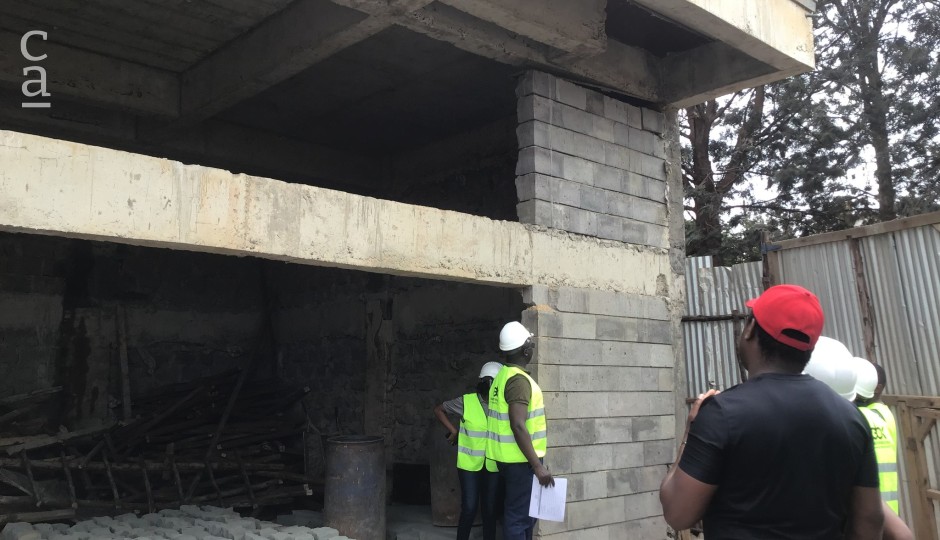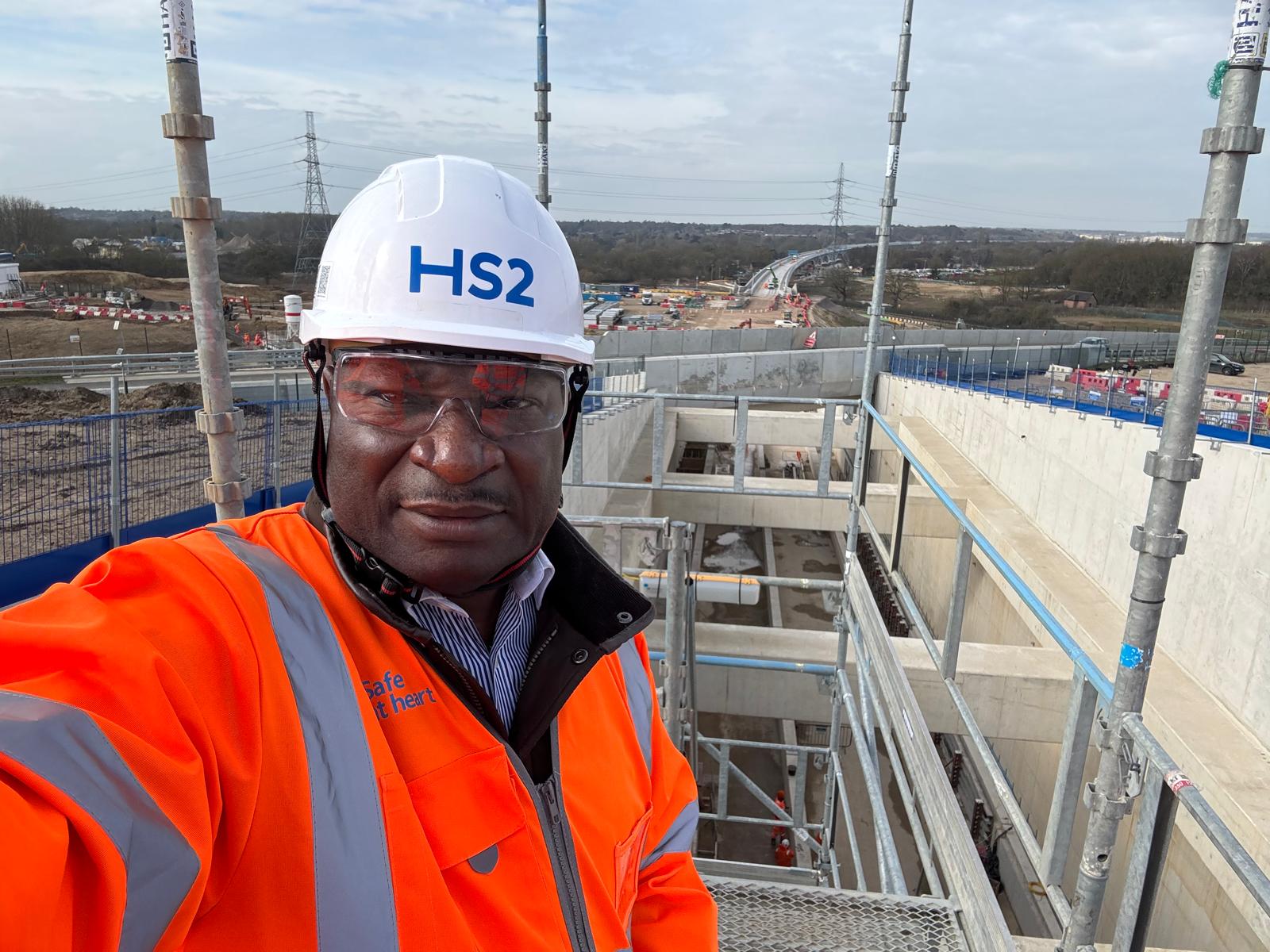Safety Remains Critical Issue In Kenyan Construction Industry
FreeThe sector is one of the leading drivers of the economy and the need to address safety concerns has become crucial.

In early April, a four-storey residential building under construction in Kenya’s southwestern Kisii county collapsed, leading to the loss of five lives and injuries to several people.
The incident was said to be caused due to non-compliance with construction regulations, with preliminary findings from the National Construction Authority (NCA) revealing an absence of registered consultants or contractors on record for the project, which had not been registered with the authority. Moreover, the NCA had suspended work at the site in September 2024 due to non-compliance and yet the developer had resumed construction without obtaining the necessary approvals.
The collapse marked the third such incident in Kenya in April alone, which the Architectural Association of Kenya (AAK) said was a grim indication of systemic negligence in enforcing building safety, site inspections and regulatory oversight.
The country’s construction sector has a history of inadequate occupational safety, with a study titled ‘Common Construction Site Hazards in Nairobi County, Kenya’ published in 2017 finding the overall prevalence of occupational injury was 74% among construction workers.
With Kenya’s construction industry being one of the leading drivers of the economy, providing a major source of employment in urban areas and driven by the government’s push to plug the affordable housing gap, the need to address safety concerns has become crucial.
Industry opinion
According to Barasa Ongeti, an International Federation of Consulting Engineers (FIDIC)-certified contracts manager at Raxio Data Centres, Kenya is a member of the International Labour Organisation (ILO) and has adopted several conventions through the Occupational Safety and Health Act of 2007 (OSHA 2007), making compliance with safety regulations legally mandatory, with penalties for non-compliance. Additional regulations also apply to construction and public health safety.

Moreover, the Directorate of Occupational Health and Safety (DOSHS) and NCA conduct regular workplace inspections to ensure safety standards are met.
Despite this, Ongeti notes that construction safety culture in Kenya is generally underdeveloped due to limited technical and financial resources. Many workers lack basic personal protective equipment (PPE) and safety manuals are often absent. Larger firms, particularly international contractors, do emphasise safety, Ongeti says, although foreign companies may need to make extra efforts to instill a strong safety culture among their staff.
According to Ongeti, a weak safety culture, lack of training and resources, and ineffective operational procedures are significant factors contributing to the construction industry’s poor safety record. However, the most crucial aspect required is a cultural shift, he says.
“Safety needs to be deeply embedded into the values and practices of the construction industry. In many cases, safety is seen as an afterthought rather than a core priority, and this mindset must change,” says Ongeti.
Tony Onyango, site engineer at local contractor Ark Construction, says that while the Kenyan construction industry has improved in terms of safety, especially for commercial construction projects, which utilise professionals for implementation, there is indeed a “weak safety culture” in the country.
“This runs from those at the top [level] of construction projects and trickles down [to] the bottom,” says Onyango. “It is rare to find a safety officer [at] informal residential construction sites. For sites where there are such resources, it has come down as a client requirement, rather than from the construction team's own initiative.”
Meanwhile, Ronald Mbiu, founding partner at Endelevu Designs, which offers sustainable design and building services, opines that Kenya has a poor safety culture but this is tightly tied to finances.
“The construction industry has been on a decline since 2015 and, as such, construction companies and practitioners are more concerned about distributing money to areas that have a more direct impact on revenue streams,” says Mbiu. “It's not a matter of people not seeing [safety] as a priority but it isn't the number one priority. However, more companies are [now] paying attention to [safety] and working with occupational health and safety officers than before, but not to an ideal rate as hoped for.”
Government measures
The Kenyan government itself is cognisant of the scale of the issues affecting the construction industry and the importance of addressing them.
In late March, the Ministry of Lands, Public Works, Housing and Urban Development launched a committee to undertake a comprehensive review of the NCA Act of 2011 and the NCA Regulations of 2014.
Key priorities for the review include the curbing of structural failures; introduction of stricter penalties to support quality assurance inspections; enforcement of mandatory technical inspections under the Building Code 2024, which came into effect on 1 March 2025; adoption of international construction standards and best practices in construction; and incorporation of sustainability in the sector.
The committee is expected to engage stakeholders from across the construction industry, including engineers, architects, contractors and developers, before drafting amendments to the NCA Act. Once finalised, the proposed reforms will be submitted to parliament for approval.
Building Code 2024
The Building Code 2024 is itself a mechanism the government hopes will transform how construction is carried out in the country by providing an up-to-date framework and standards for the planning, design, approval, implementation, maintenance and demolition of buildings.
Launched nearly six decades after the 1968 building code, which was viewed as static, outdated and an impediment to the government’s affordable housing goals, the new code will, among others, promote orderly and coordinated developments; appreciation of appropriate building materials and technologies; professional maintenance of building stock; accountability and responsibility within the built environment; and utilisation of professional services in the built sector.
A salient feature of the Building Code 2024 is disaster risk management on construction sites – this emphasises the responsibilities of owners, contractors and other stakeholders to ensure health and safety throughout all phases of construction, from planning to execution.
The guidelines aim to minimise risks associated with construction activities and ensure compliance with safety standards. Moreover, it emphasises the importance of inspections, emergency preparedness and the implementation of safety measures to protect workers from hazards such as drowning, vehicle movement, fire and inadequate air quality.
The code stipulates that contractors are prohibited from commencing work unless the owner is aware of their responsibilities under the safety code. In addition, specific safety protocols must be followed for scaffolding, ladders and working platforms, including dimensions and materials used. In cases of demolition and the use of explosives, clear plans must be prepared and approved by the relevant authorities to ensure safety. Moreover, engineers are mandated to communicate safety concerns promptly and provide written documentation of inspections.
The Building Code 2024’s mandatory five-year review cycle is expected to ensure Kenya remains at the forefront of global construction trends.
Enhancing safety culture
Actions are also being taken to improve the safety culture in the Kenyan construction industry. In mid-February, London-based global safety charity Lloyd’s Register Foundation announced a partnership with the Engineers Board of Kenya (EBK) in which it will invest nearly £300,000 (US$397,965) in a programme aimed at transforming the safety culture across the construction industry.
The project, titled ‘Programme for Enhancement of Safety Skills for Engineers and Practitioners in the Construction Industry in Kenya’, will support the development of curricula, courses and monitoring tools that will ensure practitioners and workers have the capacity, capability and understanding to identify and address risks to safety on construction sites across Kenya.
Collaborating with its professional and academic network, EBK will deliver three targeted work packages focused on analysing and identifying gaps in construction training, industry and policy. Findings from this phase will inform the content for a suite of resources, including a new curriculum for apprentices and improved training for practitioners, which is expected to improve safety consciousness among Kenyan engineers and construction workers. Monitoring and evaluation throughout the project is planned to help develop a set of regulatory frameworks that will raise standards throughout the engineering value chain.
According to Lloyd’s Register Foundation, following successful implementation in Kenya, there is scope for the programme to scale up activities throughout East Africa, sharing learnings with key stakeholders and supporting the adoption of engineering best practices in neighbouring Tanzania, Uganda and Rwanda.
In order for lasting change, Ark Construction’s Onyango says change needs to come from the top.

“We start from the owner of the construction project – the client,” says Onyango. “Almost always, when the client demands a specific safety standard at the tender stage, the contractor would be willing to price for it and therefore implement it at the construction stage. If we have enough clients demanding [safety standards], it would soon be a culture worth emulating by all other players in the industry.”
Endelevu Designs’ Mbiu notes that sustainable design and construction services could also help mitigate various safety risks involved with the use of conventional building materials and processes.

Source: ConstructAfrica
“For example, the use of little to no cement in the building design mix gets rid of cement dust that can cause silicosis due to prolonged exposure, as well as a reduction in waste materials, which have been shown to cause injuries due to the clutter occasioned, leading to reduced awareness of objects that can cause injuries,” he says.
According to data from the Kenya National Bureau of Statistics, the construction industry experienced a market size growth of US$15.6 billion in 2023 and is projected to achieve an average annual growth rate of more than 5% between 2025 and 2028. A heightened awareness of occupational safety from all stakeholders would help unlock the sector’s full potential.
Photo: Construction site in Kenya (Source: Facebook @ EBK)
Discover
myConstructAfrica
Your one-stop-shop for information and actionable intelligence on the construction and infrastructure pipeline in African countries
- News, analysis and commentary to keep up-to-date with the construction landscape in Africa.
- Industry Reports providing strategic competitive intelligence on construction markets in African countries for analysts and decision-makers.
- Pipeline Platform tracking construction and infrastructure project opportunities across Africa from conception to completion.
- Access to contact details of developers, contractors, and consultants on construction projects in Africa.
- News and analysis on construction in Africa.
- Industry Reports on construction markets in African countries.
- Pipeline platform tracking construction and infrastructure projects in Africa.
- Access to contact details on construction projects in Africa.




